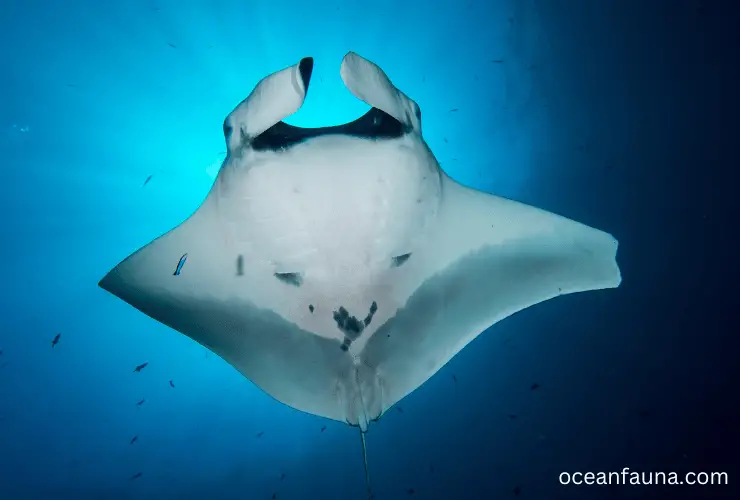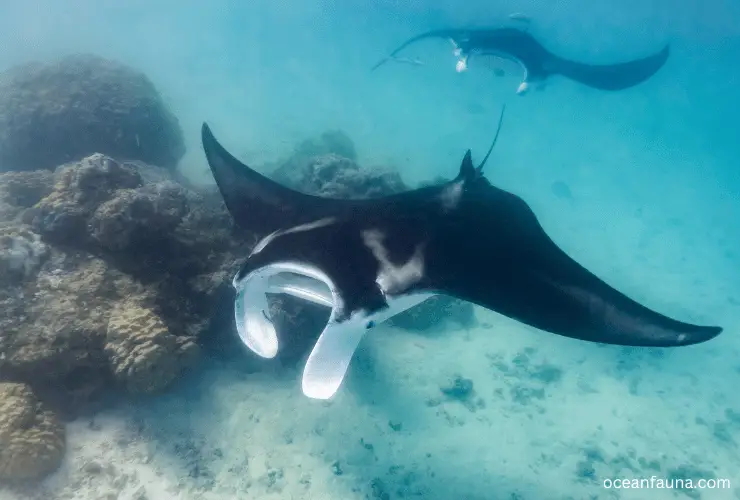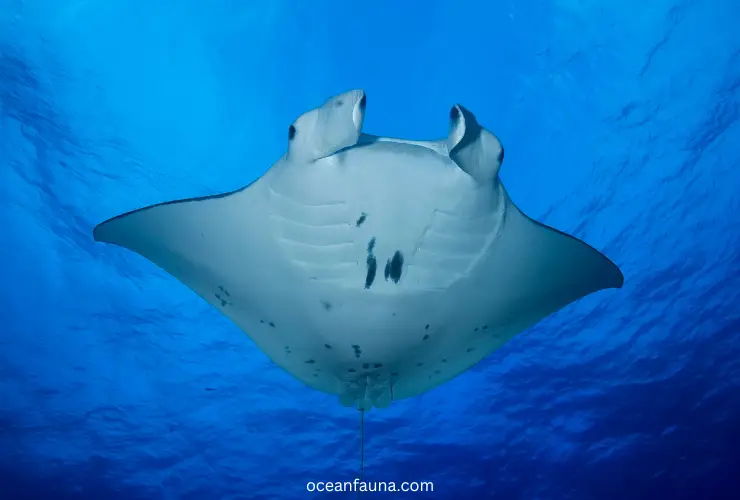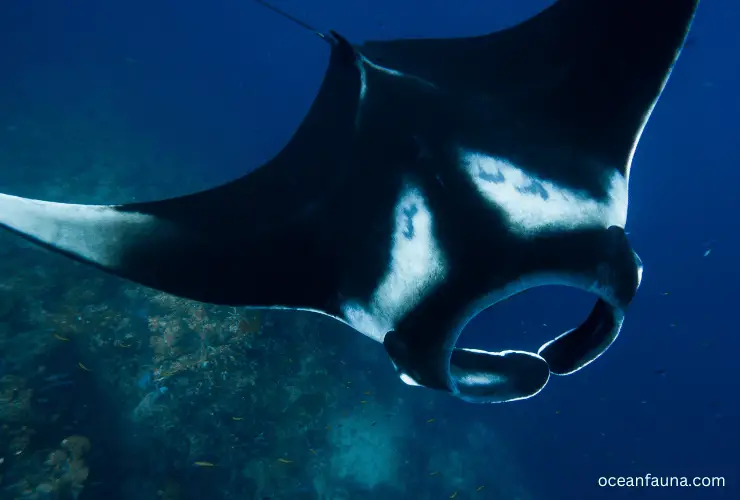Manta rays are vertebrates. Similar to elasmobranchs like sharks and other rays, they have a cartilaginous skeleton that supports and protects their internal organs.
While most people assume that all fish have bones, Manta Rays are one of the few species that belong to cartilage-based skeleton structures. They are also boneless species.
In this article, I will examine any evidence of whether Manta Rays are vertebrates or not. I will also dive into whether they have a spine or bones.
What Is a Manta Ray Classified As?
Manta rays are categorized as cartilaginous fish in the scientific world, including any fish with cartilage skeletons.
The family Mobulidae, which contains both manta rays and devil rays, comprises the latter group and includes manta rays.

The family Myliobatidae, which includes an eagle and cow nose rays, was originally used to categorize manta rays.
Manta rays, on the other hand, are unique enough to belong in their own family, the Mobulidae, according to the current study.
They are distinguished from other marine species by their distinctive traits, highlighted in this categorization.
Are Manta Rays Vertebrates or Invertebrates?
In a word, manta rays are vertebrates.
Since Manta Rays are vertebrates, they have a range of adaptations that enable them to live and thrive in the water.
For instance, they have a complex respiratory mechanism enabling them to get oxygen from water and an efficient circulatory system maintaining a constant body temperature.
Invertebrates, on the other hand, lack a spinal column and backbone. They consist of many creatures, such as worms, insects, crustaceans, and crustaceans.
Certain invertebrates are aquatic and resemble manta rays in shape with their flattened bodies. However, these organisms are not closely related and have distinct skeletal systems and ways of existence.
Do Manta Rays Have Bones?
We know Manta rays are a creature classified under the phylum Chordata. Usually, phylum Chordata belongs to both vertebrates and invertebrates. As with many species under phylum Chordata, manta rays are vertebrates.

They come with skeletons (made of cartilage) instead of bones. Yes, we can’t directly say that they have backbones (subphylum Vertebrata).
At the same time, we can’t deny the special skeletal formulas at their back because they are not under invertebrates species. However, they are classified under Cartilaginous fishes, which feature a skeleton (made of cartilage) not bone.
More significantly to say, rather than bone or backbone, they pose a special type of connective tissue. Interestingly, some researchers compared this connective tissue with a backbone.
But one thing is clear there is a difference between manta rays’ so-called vertebrae or connective tissue compared to other vertebrate creatures.
I mean, although Manta rays belong to a vertebrate family, but they pose only a supportive cartilage-based skeleton structure instead of a backbone. Actually, it’s a connective tissue that is lighter and more flexible.
More significantly, they don’t pose strong connective tissues (backbone) like other bony species.
Did you know? Manta rays are equipped with a set of cartilaginous fins that they employ for stability, propulsion, and steering.
These fins are connected to its disc-shaped body and are independently movable to aid the ray in navigating the water.
Manta rays are among the biggest and most stunning creatures in the water, despite not having any bones.
Do Manta Rays Have a Spine?

No, unlike most fish, Manta rays do not have a spine on their tail.
As mentioned above, Manta rays have a cartilaginous structure that is light and flexible and is the same as the cartilage found in the human ear and nose.
Due to this, Manta rays become more agile and able to navigate in the water more. They do have a ‘stinger’ on their tail, a modified spine known as a “spinelet.”
The spinelet is coated in a layer of skin and mucus rather than a real spine.
FAQs
Are Sharks and Rays Vertebrates or Invertebrates?
Both sharks and rays are vertebrates. The shark or rays also have a cartilaginous skeleton that supports and protects its internal organs, allowing quick swimming motion.
Sharks and rays have a central nervous system, a brain, and a spinal cord, much like other vertebrates do.
Moreover, they have closed circulatory systems that transport blood throughout their bodies and gills for respiration.
Hence, sharks and rays are considered vertebrates even if they may not resemble bony fish.
What Animals Are Both Vertebrates and Invertebrates?
A single animal cannot be both a vertebrate and an invertebrate!
These terms indicate two different animal groups depending on whether an animal has a backbone or spinal column.
Vertebrates, including fish, reptiles, birds, and mammals, have completely developed internal skeletons made of bone or cartilage.
In contrast, the varied creatures known as invertebrates lack an internal skeleton or backbone. Insects, mollusks, crustaceans, and worms are a few examples.
But there are Chordates that include both vertebrates and invertebrates.
A group of creatures known as the Chordates includes vertebrates and certain invertebrate species like tunicates and lancelets.
Therefore, some chordates are vertebrates, and some are invertebrates.
Conclusion
While Manta rays do not have any bones, they have large brains relative to their body size. They are capable of sophisticated behaviors, such as problem-solving, memory retention, and social learning.
They are also known to exhibit curiosity and interact with humans in a friendly and playful manner.
While manta rays are certainly intelligent and impressive animals, it’s difficult to say whether they are the “smartest” fish without a more precise definition of what is meant by intelligence in this context.

